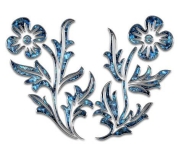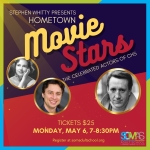Amazing map of NJ racial distribution by census block level
susan1014 said:
shocked to see just how white some parts of Maplewood are.
At the risk of being lit up.
I'm not shocked.
Interesting map. But data is 5 years old. There might be some noticable changes in 5 years.
bramzzoinks said:
Interesting map. But data is 5 years old. There might be some noticable changes in 5 years.
Might be hypothetically? Or are there changes you are aware of?
Tom_Reingold said:
bramzzoinks said:Might be hypothetically? Or are there changes you are aware of?
Interesting map. But data is 5 years old. There might be some noticable changes in 5 years.
I would surmise given the economic downturn we are just emerging from that Maplewood would not be any more evenly racially distributed. Possibly more white in fact
RobB said:
susan1014 said:At the risk of being lit up.
shocked to see just how white some parts of Maplewood are.
I'm not shocked.
I won't light you up...I'm actually only a little shocked.
I just thought that Maplewood had done a bit better than that at recovering from the bad old days when it had lots of real estate discrimination, while South Orange was more open to Jews and people of color.
It startles me to think how much less diverse the mix of complexions is on streets just a few blocks from mine.
susan1014 said:
RobB said:I won't light you up...I'm actually only a little shocked.
susan1014 said:At the risk of being lit up.
shocked to see just how white some parts of Maplewood are.
I'm not shocked.
I just thought that Maplewood had done a bit better than that at recovering from the bad old days when it had lots of real estate discrimination, while South Orange was more open to Jews and people of color.
It startles me to think how much less diverse the mix of complexions is on streets just a few blocks from mine.
It's due to economics. AA population of South Orange has higher median income then white population. Maplewood AA population has significantly lower median income .
There has been a size able, stable middle class black population in SO for quite some time
mod said:It's due to economics. AA population of South Orange has higher median income then white population. Maplewood AA population has significantly lower median income .
There has been a size able, stable middle class black population in SO for quite some time
I'm aware of the differences in median income, and the history of tolerance that has made SO a middle class black haven for decades...what interests me today is that the census block data suggests how little things have changed in some ways.
The map shows that many areas of South Orange have significantly higher diversity than equivalently well-off areas of Maplewood. That difference clearly must be due to the accumulation of hundreds of individual real estate decisions among people who can afford those neighborhoods.
As far as black/white numbers, individual decisions and realtor practices may not be the only factors. People in other threads have mentioned that they (or their friends) coming from NYC had only heard of Maplewood and not South Orange, at least at first. Similarly, I bet South Orange had gotten more publicity among upper-middle class blacks. And what I have read about the white/black income statistics was that the difference in South Orange was negligible, and that income of black families was only higher in one particular census, but I could be wrong. There is an interesting website by a guy who has studied upper- and upper middle class, considerably black suburban areas in the U.S. (including South Orange) -- worth checking out.
As far as the Jewish population, of course there are no official census figures. But I don't think the difference between S.O. and Maplewood was ever overwhelming. My "Jewdar" when I was growing up in the '50's and '60's in M'wood told me that the population (at least of children in the public schools) was one third Jewish in S.O. and one quarter Jewish in M'wood.
Also, census figures show that the racial difference between Montclair zip 07042 and Upper Montlcair 07043 is considerably larger than differences between Maplewood and South Orange.
I think th Brooklyn West effect and development has made MSO more white. And Milburn has definitely become more Asian.
As to comparison with Montclair, one of the few things Bill Calabrese said that stuck with me in a positive way was, to paraphrase, the quality of the diversity in MaSO (he may have been more specific to just SO) was better than Montclair in the sense that it's a more inclusive diversity. Not to knock Montclair, I give credit to all communities that make a concerted effort to maintain a racial diversity that has been elusive in most northern urban areas of the US.
As to Maplewood vs. SO. While I certainly can't lay any claim to having been here in the post-war era, like Chopin, between the legacy of institutions and political voting history (which I very scientifically observed on the walls of Cryan's), SO was more Democratic sooner and my guess is that it's because it was, for reasons that probably built on themselves, more Jewish, more Catholic and less WASPy than Maplewood.
Part of this I think may be attributable to the fact that SO had a couple areas of development that were done after Maplewood was already built out (Newstead post-war, Upper Wyoming pre-war) that provided opportunity for new groups to buy in without needing old groups to move out.
Perhaps this legacy of diversity contributed to SO being a magnet for upper middle and upper income blacks (or maybe the influx of Jews and Catholics scared off the old WASPs living in Montrose, and folks knew a bargain when they saw one).
In any event, SO is a fairly unusual place demographically. It's an interesting experience to take someone who is very liberal, so liberal they're convinced that blacks are universally disadvantaged by our society, and to drive them through Montrose or Upper Wyoming or Newstead and tell them a significant number of the home owners in those neighborhoods are African American.
Anecdotally, of course, I notice this difference when running errands in downtown Maplewood vs South Orange.
About five years ago, I wrote to the CCR to point out that they were not correct in treating the western sides of the two towns the same in terms of "underrepresentation" for purposes of the PRISM loans (which are no longer in effect.) I said that it was my understanding that the western side of Maplewood was 95% white, while the western part of South Orange was about 80% white, 20% black. The CCR did write back that these numbers were correct.
I pointed out to them that South Orange was fully integrated in all of its neighborhoods.
SteveIvan - Thank you. That was excellent.
Interesting to see the heavy Hispanic population near Ivy Hill park and Irvington Avenue. Never realized that. Cool.
I'm assuming that census block is the towers?
jimmurphy said:
Interesting to see the heavy Hispanic population near Ivy Hill park and Irvington Avenue. Never realized that. Cool.
jimmurphy said:
Interesting to see the heavy Hispanic population near Ivy Hill park and Irvington Avenue. Never realized that. Cool.
That's reflected in the stock of the grocery store adjacent to the towers. Good stuff there
According to the map, there are people living in my backyard that I was not aware of.
My neighborhood is a mix of many different colored dots. But if you look even a few blocks away blue dots do start to dominate the neighborhoods
The dots are just spread throughout the census tract area - they don't actually map to houses. Eg, if a block has 100 residents, there'll be 100 dots randomly distributed throughout the geographical block.
arme0007 said:
According to the map, there are people living in my backyard that I was not aware of.
arme0007 said:
According to the map, there are people living in my backyard that I was not aware of.
According to the map there are three Latino people living in my mother's house. I'll let her know so she can find them and start charging them rent.
(I'm joking, they explained that the dots are spread within a generalized area, hence Clinton school and Underhill field having dots when no one actually lives there.
I think the big colored circles on the grass might be a dead giveaway.
But, back to the data--not sure why this is surprising to anyone. Nor why anyone would think this reflects negatively on one area over another. Maplewood has been more concentrated black/white in its areas for ages.
ctrzaska said:
I think the big colored circles on the grass might be a dead giveaway.
But, back to the data--not sure why this is surprising to anyone. Nor why anyone would think this reflects negatively on one area over another. Maplewood has been more concentrated black/white in its areas for ages.
It is more based on income than race. Back in the late 1970s when we moved here the Hilton area was overwhelmingly working class white. This changed in the 1990s because, and excuse the racism, a lot of older, ethnic, lower middle class people either panicked and/or were driven out by block busting tactics, the same as what happened in central Brooklyn.
I do think that SO, as mentioned above, was a community where black professionals have been comfortable for a long time and that has held up over the years.
bobk said:
ctrzaska said:It is more based on income than race. Back in the late 1970s when we moved here the Hilton area was overwhelmingly working class white. This changed in the 1990s because, and excuse the racism, a lot of older, ethnic, lower middle class people either panicked and/or were driven out by block busting tactics, the same as what happened in central Brooklyn.
I think the big colored circles on the grass might be a dead giveaway.
But, back to the data--not sure why this is surprising to anyone. Nor why anyone would think this reflects negatively on one area over another. Maplewood has been more concentrated black/white in its areas for ages.
I do think that SO, as mentioned above, was a community where black professionals have been comfortable for a long time and that has held up over the years.
I agree income is a primary driver. I'm not sure if race follows income, or the reverse, though. Seems like they go hand in hand in both towns, just on differing sides of the economic spectrum. Can't speak for block-busting tactics unless this is a reference to the CCR's initiatives. Why white folks moved out in the 90s may be due to what you're saying, but it seems to be the opposite in areas like Hilton now. That any of it is due to intolerance seems a stretch, in much the same way one could make arguments as to why more affluent blacks seem to prefer SO over Maplewood being due to existing racial splits.
ctrzaska said:
Why white folks moved out in the 90s may be due to what you're saying, but it seems to be the opposite in areas like Hilton now.
I would be interested in more details re your view of what the Hilton area is all about in such terms now.
www.higley1000.com is worth checking out. Of his 25 top affluent neighborhoods in the U.S. with a considerable black presence, he ranks Newstead and Montrose Park North numbers #2 and #3, respectively, by percentage of black residents. My neighborhood in St. Louis is #24: The Central West End. A caveat is that the boundaries and sometimes even the names of some of the neighborhoods seem to be a bit arbitrary. The site is organized according to Mr. Higley's subjective impressions on viewing the neighborhoods in person. But sometimes impressions are better than statistics. I must admit I haven't gone through the site with a fine-tooth comb lately. However, one thing I do remember from previously is that he said that, in his experience, the visual change in neighborhood appearance going across the city line from the Vailsburg section of Newark is matched in the U.S. only by one's impression crossing the city line from Detroit to the Grosse Pointe suburbs.
Rentals
Featured Events
-
Stephen Whitty Presents - Hometown Movie Stars: The Celebrated Actors Of CHS
May 6, 2024 at 7:00pm




























I'm really not sure where this belongs, but this map is fascinating (as the article says, a census block is roughly a few city blocks worth of data).
http://www.nj.com/news/index.ssf/2015/10/this_map_shows_a_racial_breakdown_of_every_person.html
To me, the most striking local information on the map is that it clearly shows that South Orange has a much more even distribution of ethnic diversity than Maplewood does. I knew this was somewhat true, but am still shocked to see just how white some parts of Maplewood are.